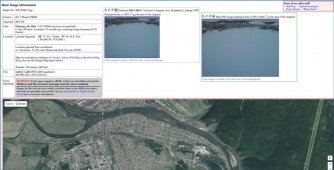
One way is to download the file of a photo, then right click on it and open “Properties.” In the “Details” tab there will be all existing metadata. Nonetheless, those sites could use location data directly from the GPS-sensor if the mobile device of the owner allows the use of such data.Ĭhecking EXIF data availability couldn’t be easier. Social network sites such as Facebook, Twitter, or Instagram delete metadata from a photo the moment of uploading. And finally, it depends on the server on which a photo was published. Secondly, users might disable the geo-location feature on their devices in order to keep their privacy or to use the battery- saving mode.

Some cameras or mobile devices may not have a GPS sensor to trace coordinates. Firstly, it depends on the device with which the photo was taken. However, the availability of such data depends on a few factors. Geo-location data (if there is any) is useful for identifying an accurate location. Second, whether the photo was edited, and if so, how. First, it helps to find out where and when a photo was taken. The model of camera and its settings (exposure time, aperture value etc.).Images come with basic metadata, as well as information about the device (the EXIF data) with which it was taken.Īmong other information, in metadata you can find: For example, exploring information that isn’t visible in the picture.Įach image file contains a range of additional information, called “metadata,” which is stored within a file. Such methods are not always sufficient, and so there are other ways as well.

As long as we have the name of the object, we are able to name the location. One of the most common ways to identify the location of a photograph is to search via Google or TinEye. Let’s begin with a small question – where exactly was this photo taken?


 0 kommentar(er)
0 kommentar(er)
